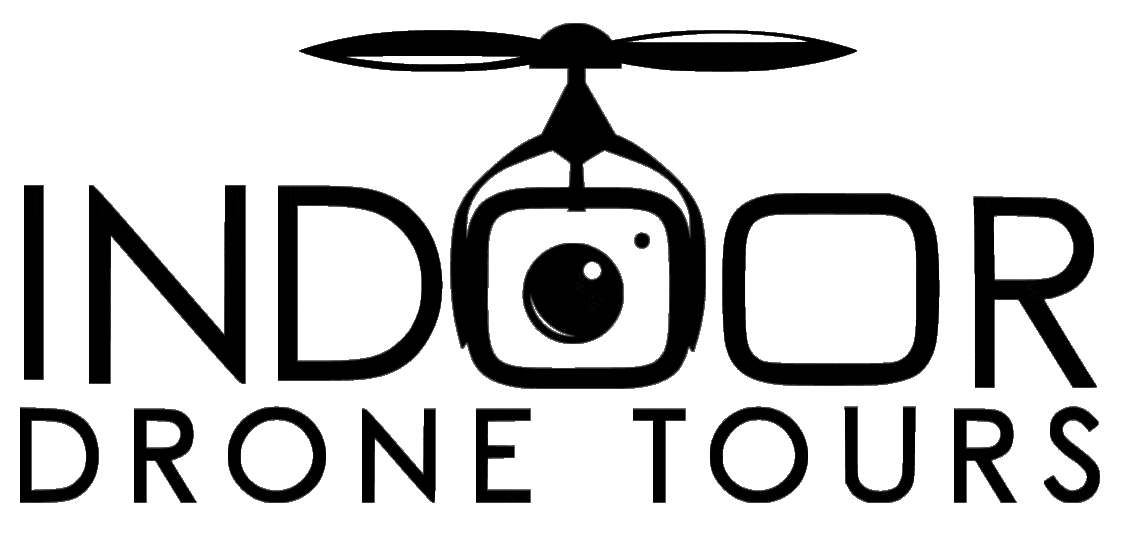Soaring High: Unveiling the Landscape of Commercial Drone Services
Author: Indoor Drone Tours
Posted 11 Apr 2024Commercial drones are basically flying robots, remotely controlled or programmed to perform specific tasks. These marvels of technology have come a long way since their early days and are even more than hobbyist toys. Advancements in battery life, flight control systems, and sensor technology have propelled them further into use in professional and commercial spaces with the help of commercial drone services.
Commercial drone services have revolutionized many industries, by boosting both their efficiency and growth, so much so it can be hard for customers to choose the right company . In this article, Indoor Drone Tours will break down for you how the landscape of commercial drone services works and even how we have contributed to this booming industry.
Talk To The Indoor Drone Tours Team Today!
Applications Across Industries
As we briefly mentioned before, the advent of drone technology has heralded a new era of innovation across various sectors. Let’s explore a few.
Agriculture
Drones can collect valuable data, meticulously map fields, identify areas with nutrient deficiencies , and even precisely spray crops! This is the reality in precision agriculture, where drones are optimizing resource use and boosting yields. From crop monitoring and pest management to irrigation optimization, drones provide real-time aerial insights and facilitate data-driven decision-making, transforming traditional farming into a dynamic and sustainable endeavor.
Construction and Infrastructure
Forget the precarious climb – drones can capture detailed aerial imagery of construction sites. This allows companies to better track progress, assess safety and even create 3D models for virtual tours! Drones that have been equipped with high-resolution cameras and LiDAR sensors contribute to cost savings and operational efficiency by streamlining infrastructure inspections, identifying defects, and enhancing safety protocols.
Real Estate
Selling a sprawling property? Drones can capture stunning aerial photos and videos that show your real estate in all its glory. Potential buyers can even get a virtual tour from the comfort of their couch, and realtors can create dynamic marketing materials that truly stand out. High-resolution aerial photography and videography captured by our commercial real estate drones provide prospective buyers with dynamic views of properties and enrich the home-buying experience with greater engagement between buyers and sellers. Just look at what we were able to achieve in a commercial space with our custom-built mini drone!
Filmmaking and Photography
Drones have become a game-changer for filmmakers and photographers. They can capture breathtaking aerial shots, smooth panoramic views, and unique angles that were previously inaccessible. Commercial drones have opened doors for creative storytelling and stunning visuals in movies, commercials, and even documentaries. Equipped with stabilized cameras and cinematic capabilities, drones offer filmmakers and photographers creative freedom to explore epic landscape shots and intricate aerial sequences across many genres and projects.
There’s no limit to what you can create when commercial drones open doors. Check out this commercial we shot for Wilson Golf!
Surveying and Mapping
Gone are the days of tedious land surveys. Drones equipped with advanced sensors can quickly and efficiently map vast areas, creating high-resolution 3D models for everything from urban planning to archaeological digs. This not only saves time and money but also allows for more precise measurements and data collection. These types of drones are typically equipped with GPS and GIS technologies , and LiDAR sensors and empower professionals across industries, from real estate marketing to urban planning to environmental conservation.
Emergency Services
Search and rescue missions got a powerful ally with commercial drones. These drones can quickly scan disaster zones, locate survivors, and deliver vital supplies to remote areas. Firefighters can also use them to assess fire damage and identify hotspots, while law enforcement can leverage them for search operations and crime scene investigation. These types of drones tend to be equipped with thermal imaging cameras and live-streaming capabilities that allow for swift decision-making and resource allocation, increasing the possibility of saving lives and mitigating risks in crises.
Advantages of Commercial Drone Services
The adoption of commercial drone services has ushered in a new era of innovation and efficiency across various service industries and the perks are great!
Cost-Effectiveness
Imagine ditching the helicopter or scaffolding for a drone. That’s the beauty of commercial drone services – they can often accomplish tasks at a fraction of the cost. This translates to significant savings for businesses, especially in industries like construction and infrastructure inspection. Drones offer a cost-efficient alternative because they require less infrastructure and personnel to operate so you can optimize resources and maximize profitability.
Efficiency and Accuracy
Time is money, and drones are time machines, well, sort of. They can rapidly capture data and imagery over vast areas, significantly reducing the time needed for tasks and drone inspections that were previously slow and laborious. Drones can also access remote or hazardous environments inaccessible to conventional methods, ensuring comprehensive coverage and eliminating blind spots. Plus, with their advanced sensors and data processing capabilities, they deliver high levels of accuracy, ensuring you get the information you need in a reliable format.
Safety Enhancement
Certain tasks are inherently risky – inspecting wind turbines, navigating disaster zones, or exploring confined spaces. Drones can be our brave little robots, venturing into these hazardous areas and collecting crucial data without putting human lives at risk. This is a major advantage that allows us to prioritize safety while still getting the job done. We can all agree that safety is paramount in any business operation, and commercial drone services offer a significant enhancement in this regard. Research is always being conducted into the societal impact of commercial drones . Most commercial drones are even equipped with advanced collision avoidance systems and fail-safe mechanisms to enhance flight safety and reliability while reducing the likelihood of accidents or mishaps.
Types of Commercial Drones
There is a diverse spectrum of commercial drones that can each be tailored to specific applications and operational requirements. Let’s highlight a few of their unique characteristics and applications.
Fixed-Wing Drones
These types of drones look like miniature airplanes. They have fixed wings, hence the name, and can generate lift just like a traditional plane. Their advantage? Longer flight times and impressive range. This sort of makes them ideal for pipeline inspections, aerial mapping, surveying, and agriculture. However, while they excel in high-altitude missions and long-range reconnaissance, fixed-wing drones typically require more space for takeoff and landing, limiting their suitability for confined environments.
Multirotor Drones
These are the most common commercial drones. They look like tiny helicopters with multiple rotors that provide vertical lift for take-off and landing as well as maneuverability in tight spaces. They’re incredibly versatile, perfect for tasks like aerial and drone photography, construction site monitoring, and even search and rescue operations. Multirotor drones , also known as rotorcraft drones, can be found in these most common variants including quadcopters (four rotors), hexacopters (six rotors), and octocopters (eight rotors). The downside? Their flight time is typically shorter compared to fixed-wing counterparts, making them more suitable for short-range missions.
Hybrid Drones
Innovation has birthed hybrid drones! These combine elements of fixed-wing and multirotor designs. Hybrid drones can take off and land vertically like multirotors, but also achieve the longer flight times of fixed-wing drones. This makes them ideal for applications that require both maneuverability and endurance thus leveraging the strengths of both types.
Payload Capacity and Specializations
What a commercial drone is capable of carrying matters. This is where payload capacity comes in. Some drones are built to carry heavy payloads like high-resolution cameras or LiDAR (Light Detection and Ranging) scanners. Others might be designed for lighter payloads like action cameras which make them ideal for capturing stunning aerial footage.
The type of drone you intend to use is definitely dependent on what you need it to do. Ours are custom so that Indoor Drone Tours can create compelling and seamless videos to suit your purposes. There’s no need to hunt for arrows here! Just prompt your prospective client to hit play, and they’ll be whisked through each space in mere minutes! Whether you’re advertising online, via social media, or through email and text, our commercial video services are your ultimate weapon.
Book Your Drone Fly Through Video Today!
Key Technological Components
The technological advancements underpinning commercial drones have propelled them into becoming the indispensable tools they are across various industries.
GPS and Navigation Systems
Imagine a tiny autopilot on board. That’s essentially what a drone’s GPS and navigation system does. It uses GPS signals to determine the drone’s location and maintain its position. Advanced systems can even incorporate features like obstacle avoidance and pre-programmed flight paths, allowing for smooth and safe autonomous operation. In addition to GPS, advanced navigation systems may incorporate inertial measurement units (IMUs), barometers, and magnetometers to enhance accuracy and stability, particularly in challenging or GPS-denied environments.
Cameras and Sensors
The “eyes” of the drone come in the form of high-resolution cameras and various sensors. These can include thermal cameras for search and rescue, LiDAR scanners for 3D mapping, thermal imagers, multispectral cameras, gas detectors augment, or multispectral cameras for agricultural monitoring. The choice of camera or sensor depends on the specific application, allowing drones to gather a wealth of visual and non-visual data.
Battery Technology
Without a reliable power source, a drone is just a fancy paperweight. Battery technology and advancements in lithium-ion batteries have significantly improved flight times. Lithium-polymer (LiPo) batteries are commonly used in commercial drones due to their high energy density, lightweight design, and rechargeable nature. However, maximizing flight duration remains an ongoing area of development, as some applications require drones to stay airborne for extended periods.
Remote Control and Communication Systems
The pilot on the ground needs a way to communicate with their trusty commercial drone in the sky. This is where remote control and communication systems come in. These systems allow drone-certified pilots to control the flight path of the drone in real-time, as well as the transmission of images and data captured by the cameras and sensors. The specific technology used can vary, but a reliable connection is essential for safe and effective drone operation. Wireless communication protocols such as Wi-Fi, radio frequency (RF), and cellular networks enable remote operation of drones over long distances, enabling beyond-visual-line-of-sight (BVLOS) missions and autonomous flight modes.
Factors Influencing Commercial Drone Selection
Before you choose a commercial drone just stop and think. What do you need it for and where will you be using it?
Mission Requirements
This is the starting point. What exactly do you need the drone to accomplish? Is it capturing stunning aerial footage for a real estate listing, or meticulously mapping a vast agricultural field? Understanding your mission requirements will guide your choice of drone type (fixed-wing, multirotor, etc.), payload capacity (heavy camera or light action cam?), and even the specific features needed (obstacle avoidance for indoor inspections?).
Environmental Conditions
Not all drones are created equal when it comes to handling the elements. Will you be operating in strong winds, high altitudes, or even near water? You should take into consideration the temperature range the drone can operate in, as well as its wind resistance. Some drones are even built for specific environments, like waterproof models for maritime applications.
Regulatory Compliance
Remember, with great drone power comes great regulatory responsibility! Different countries and regions have varying regulations regarding commercial drone operations such as those enforced by the Federal Aviation Administration (FAA) in the United States or the European Union Aviation Safety Agency (EASA) in Europe. These regulations might cover aspects like airspace restrictions, flight time limitations, and pilot licensing requirements. Make sure the drone you choose complies with the regulations in your area to avoid any unwanted turbulence.
Budget Considerations
Commercial drones come in a wide range of price points. While top-of-the-line models boast impressive features and capabilities, they might not be necessary for every application. Carefully evaluate your budget and prioritize the features that are essential for your project. There’s a drone out there to fit every budget, so don’t be afraid to shop around and find the one that offers the best value for your needs.
Training and Certification

The importance of comprehensive training and certification for drone pilots cannot be overstated. Let’s talk about what this entails.
Pilot Training
Drone piloting requires specific skills and knowledge. Training programs typically cover topics like drone operation, flight regulations, airspace restrictions, safety protocols, and emergency procedures. Many programs also offer hands-on flight experience, allowing you to hone your piloting skills in a controlled environment before venturing into the real world. By undergoing rigorous pilot training, individuals acquire the knowledge, skills, and confidence necessary to operate drones safely and effectively in diverse environments.
Licensing and Certification Requirements
Just like airplanes need licensed pilots, most countries require commercial drone operators to obtain a specific license or certification. These are issued by the relevant aviation authority, such as the Federal Aviation Administration (FAA) in the United States or the Civil Aviation Authority (CAA) in the United Kingdom. The specific requirements can vary depending on your location, but they often involve passing a knowledge test and demonstrating your flying skills. Think of it as earning your wings for the drone world!
Continued Education and Skill Development
The world of commercial drone services is constantly evolving, with new technologies and regulations emerging all the time. To stay ahead of the curve and ensure your skills remain sharp, continued education is highly recommended. Many organizations offer workshops and training courses focused on specific drone applications or advanced flying techniques. Additionally, staying updated on the latest regulations allows you to maintain compliance and operate safely.
With Indoor Drone Tours you get the best along with our commercial drone services. Our team has got you covered with comprehensive umbrella insurance for up to $5M in damages, aerospace drone insurance, workers’ comp, and business auto coverage. We’ve soared through the skies of some of the nation’s grandest buildings, and we’re ready to provide a pre-flight certificate of insurance upon request. Plus, our pilots are all FAA certified. So what are you waiting for?
Get Your Indoor Drone Tours Quote Today!
Market Trends and Growth Potential
The global commercial drone industry is experiencing unprecedented growth, it’s expected to reach USD 699.8 Billion by 2032 . This growth is driven by technological advancements, regulatory developments, and expanding applications across various sectors.
Current Market Landscape
The commercial drone market is buzzing with activity! From agriculture and construction progress to filmmaking and emergency services, drones are finding applications across many industries. This nationwide network adoption of aerial services is fueled by advancements in technology, which are making drones more affordable, easier to operate, and packed with advanced features including improved battery life, sensor capabilities, and autonomous flight features.
Growth Projections and Forecasts
Analysts predict that the US commercial drone market will experience significant growth in the coming years. Some estimates suggest a potential market size exceeding USD 38.3 Billion by 2037 . This exponential growth reflects the increasing value proposition of drones, as businesses recognize the efficiency, cost-effectiveness, and safety benefits they offer. More use cases such as drone delivery, urban air mobility, and autonomous aerial vehicles are expected to fuel market expansion and unlock new revenue streams as they shape the future of work and commerce.
Emerging Trends and Innovations
Several emerging trends and innovations are reshaping the commercial drone industry, driving innovation, and opening new frontiers of possibility. Here are some exciting trends and innovations to keep an eye on:
- Beyond Visual Line of Sight (BVLOS) Operations: Imagine drones flying pre-programmed routes over long distances, without the need for a pilot in direct line of sight. BVLOS operations hold immense potential for applications like infrastructure inspection and long-range delivery services.
- Autonomy and Artificial Intelligence (AI): Drones are becoming increasingly autonomous, with AI playing a bigger role in flight planning, obstacle avoidance, and even data analysis. This promises to further enhance safety, efficiency, and the range of tasks drones can perform.
- Drone Traffic Management (DTM): As the number of drones in the skies continues to rise, robust traffic management systems are needed. Drone traffic management will ensure safe airspace integration for drones, similar to how air traffic control works for traditional aircraft.
- Vertical Takeoff and Landing (VTOL) Urban Air Mobility (UAM): Imagine a future where personal and cargo drones seamlessly navigate urban environments. While still in its early stages, VTOL UAM has the potential to revolutionize transportation and logistics in densely populated areas.
Summary: Navigating the Skyline with Commercial Drones
Commercial drone services have emerged as indispensable tools in the modern business landscape. It then goes without saying that by harnessing the capabilities of drones, businesses can gain a competitive edge, drive innovation, and propel brand growth in a rapidly evolving world.
Partner with Indoor Drone Tours and together we’ll embrace the opportunities presented by commercial drones and chart a course toward a future where the sky is not the limit, but the beginning of endless possibilities.
Are you ready to take off?
Contact Indoor Drone Tours To Schedule Your Drone Flight Today!
Disclaimer: Indoor Drone Tours (IDT) does not provide legal advice, insurance guidance, or regulatory compliance services. The information in this article regarding drone laws, regulations, and insurance requirements is for general educational purposes only and should not be considered professional legal or insurance advice.


